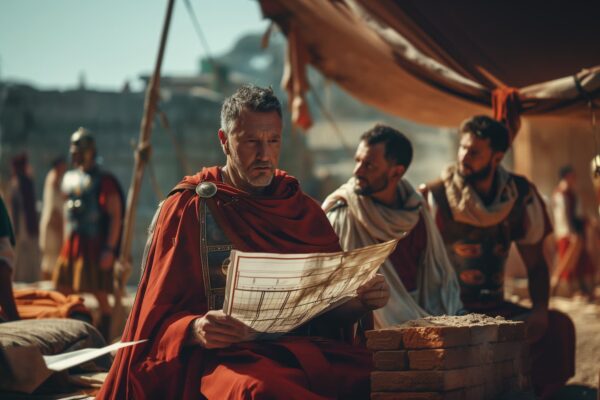The Castel Sant’Angelo in Rome is the second most visited attraction in Rome after the Colosseum, and the fifth in Italy. In addition to the most famous statues, sculptures, and works of art, the 960,000 visitors have much more to discover about this unique enchanting place.
Here are the secrets and curiosities of Rome’s Castel San’Angelo.
Before starting this article, it is important to warn you: Castel Sant’Angelo is one of the most visited tourist attractions in Italy and the world. With a year-round tourist season, you are likely to find long queues at the ticket offices when you decide to visit. To avoid inconvenience, we strongly recommend that you buy your ticket online in advance. Click below to book your entrance and gain access to Castel Sant’Angelo quickly and without any hassle.
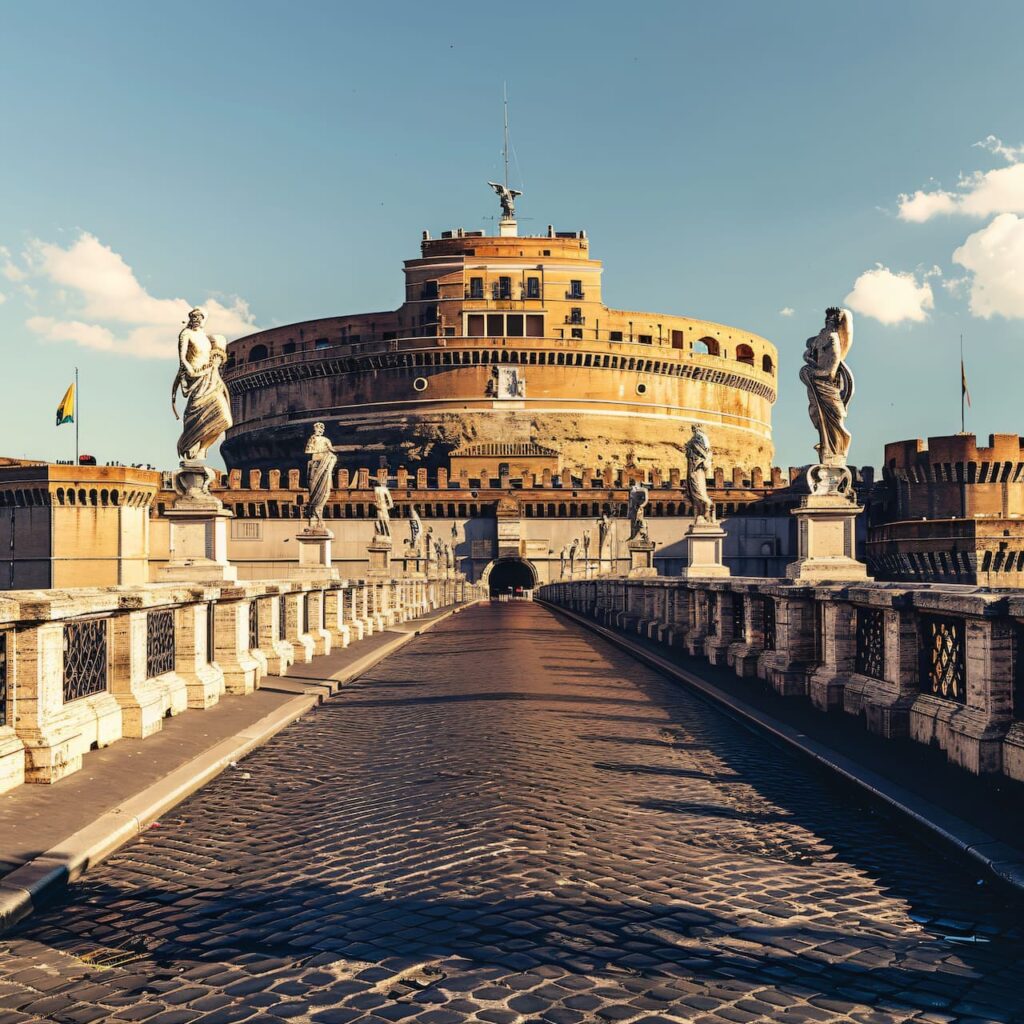
Castle Sant’Angelo Rome skip-the-line ticket: quick access.
Buy online. Choose your preferred time. Visit Rome’s Castel Sant’Angelo, the Sant’Angelo Bridge, the prisons and much more.
You can cancel free of charge up to the day before the visit.
Contents
Facts and Curiosities about Castel Sant’Angelo in Rome
The Statue in Castel Sant’Angelo

Statue of Archangel Michael destroyed by fire
As already mentioned in the article on the history of Castel Sant’Angelo, the statue that gives the castle its name has not been the same since time immemorial.
The first angel statue, in fact, was built of wood, but atmospheric phenomena eventually destroyed it.
A second one in marble followed, destroyed during the riot of 1379.
The third, also made of marble but with bronze wings, falls apart when a lightning hits the castle and blows up a gunpowder store.
In 1497 they opted for a statue in bronze, but in 1527 the need for war necessitated fusing it to make cannons.
In 1573, another marble version with bronze wings was built, which was later replaced by the current bronze statue by the Flemish sculptor Peter Anton von Verschaffelt in 1753.
The Castle Prisons
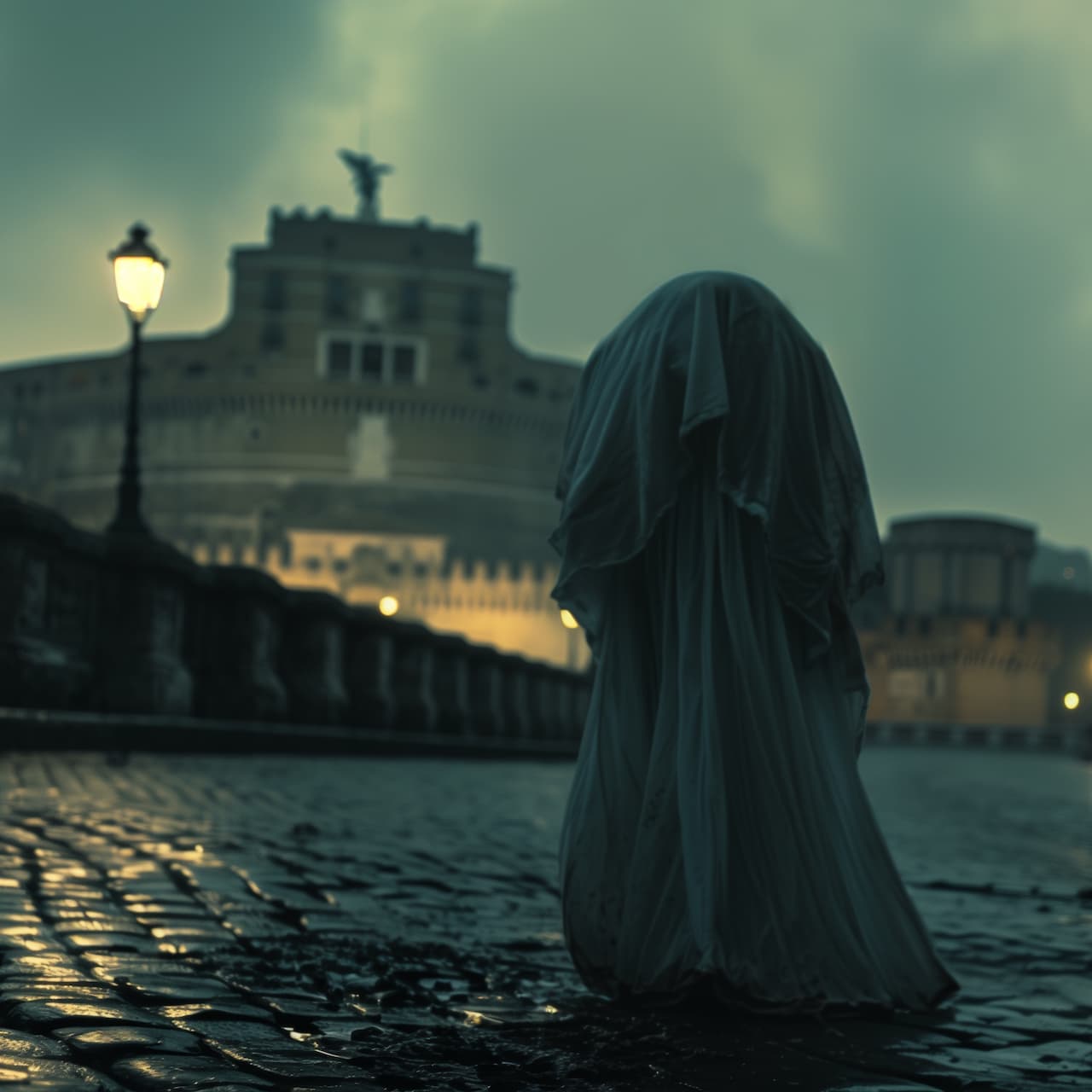
Headless Ghost by Beatrice Cenci
The Castle was used for many centuries as a prison.
The most feared secret was that of San Marocco (or Sammalò), at the rear of the San Marco bastion.
There, the condemned person was calculated from above and did not have enough room to stand or lie down.
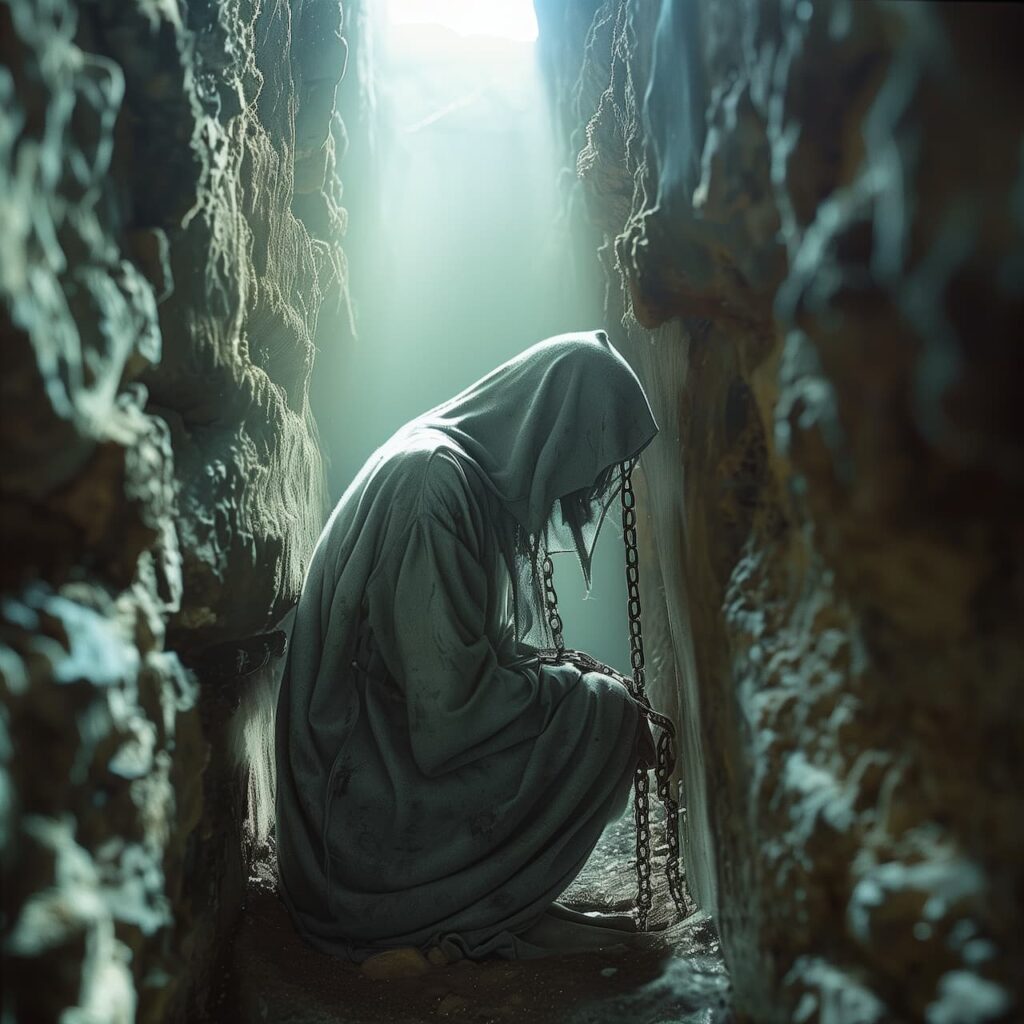
The infamous cell: Sammalò
The lower floor of the building, on the other hand, housed the cells reserved for personages of distinction, including the famous artist Benvenuto Cellini (and his equally famous evasion).
But he was not the only one: in history, among the many names of famous people, the humanists Platina and Pomponio Leto, Beatrice Cenci and the philosopher Giordano Bruno were incarcerated in Castel Sant’Angelo.
Benvenuto Cellini’s Famous Escape
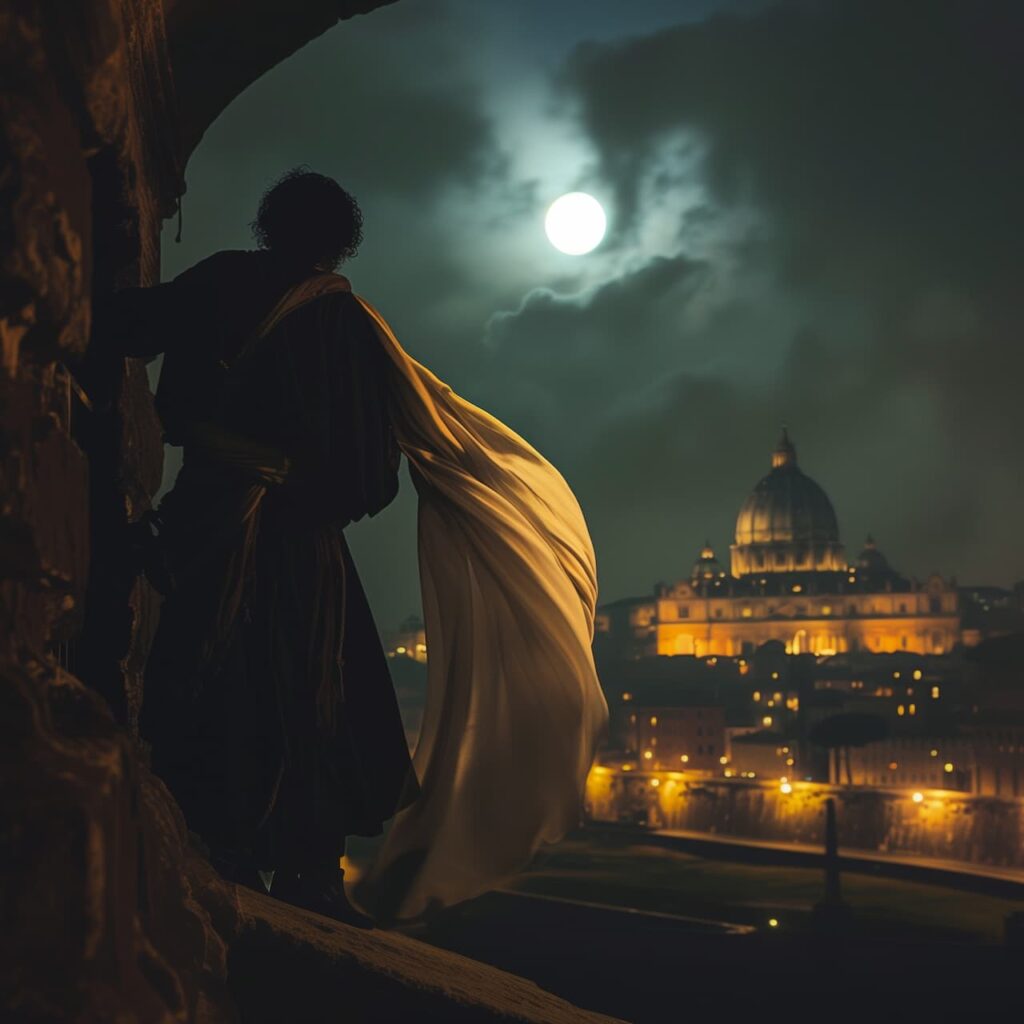
Benvenuto Cellini rappels from Castel Sant’Angelo
The Florentine sculptor, writer and oraph, famous not only for his works but also for his restless soul, was incarcerated in 1538 on charges of having stolen property from the Church during the sack of Rome by the Lansquenets.
But, as is easy to imagine, the artist did not sit still to serve his sentence: one night when the Castle was celebrating Corpus Christi, Cellini, after forcing open the cell door with pincers that he had taken from his jailer, descended from the San Giovanni bastion using the classic method of knotted sheets.
The landing was not the smoothest, and in fact caused him a fracture of the leg. However, the artist managed to escape and take refuge with Cardinal Cornaro, who, however, soon afterwards returned him to the Pope.
Back in Castel Sant’Angelo, this time in an even more angry and dark cell, Cellini took advantage of the only half-hour of daylight to read the Bible.
On one wall of the cell is still placed a glass pane to protect the drawing of a Resurrected Christ, which the artist, in his famous autobiography ‘Life’, attributes to himself.
He was pardoned by the pope and discharged in December of 1539 through the intercession of Cardinal Ippolito II d’Este and the King of France.
Mastro Titta, “Er boja de Roma“
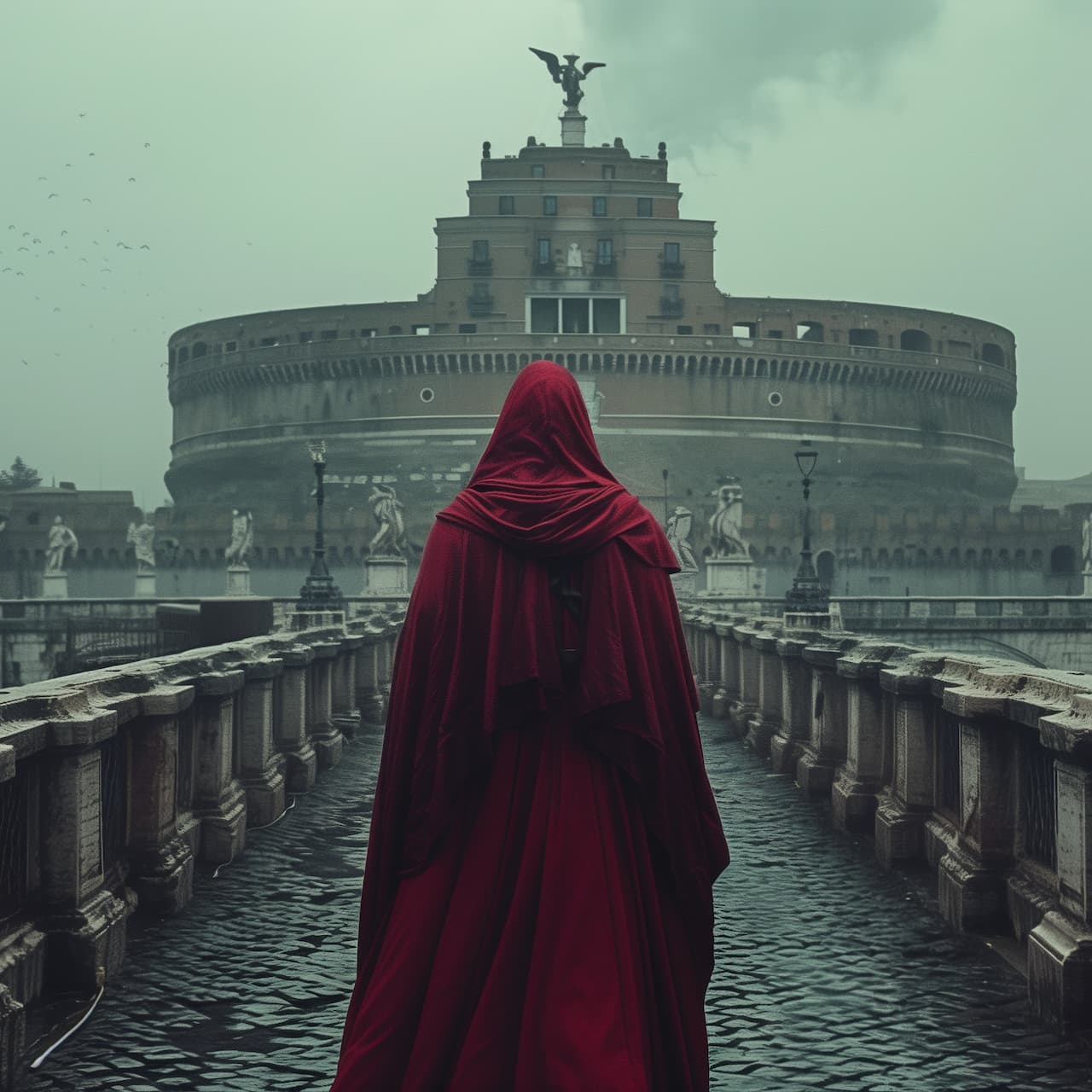
Mastro Titta, the executioner of Rome
“Mastro Titta passes the bridge.” So said the citizens of Rome when they caught sight of the buoy of the Pontiff State heading across the Ponte Elio to the Castello, well aware that someone would soon be justified.
Giovanni Battista Bugatti, known as Mastro Titta, was only one of the many executioners in the service of the Papal States, but he was also one of the most famous because of the long duration of his career: a good 68 years!
A very long career even for the present day, but let us not forget that Bugatti practised his profession between 1796 (at the tender age of 17) until 1864 when, after no less than 514 executions, at the age of 85 he was replaced and, finally, retired.
When he wasn’t torturing, squaring, hanging or gouging the condemned in the piazza of Castel Sant’Angelo, Mastro Titta was devoting himself to the much quieter trade of shuttermaker in his shop of his own.
But at any moment he could be called to duty: Mastro Titta would then hurriedly close his shop and cross the Helium Bridge, to the dismay of those who saw him pass;
Although maligned for his profession, Mastro Titta was in his own way a celebrity in Rome of the XIXth century.
In 1891 his false autobiography was published under the title ‘Mastro Titta, the executioner of Rome: memoirs of an executioner written by himself‘.
Over time, many poems, musicals and films were dedicated to him.
Having become part of the Roman popular tradition, it fuels another spectral legend: it is said that his ghost, wrapped in the red cloak he used when he practised as an executioner, can be seen walking at early dawn at many of the places of executions, not least in the Piazza di Ponte Sant’Angelo, where he is said to offer a tobacco catch to anyone he meets, as he used to do in life with the condemned.
Creepy!

Castle Sant’Angelo Rome skip-the-line ticket: quick access.
Buy online. Choose your preferred time. Visit Rome’s Castel Sant’Angelo, the Sant’Angelo Bridge, the prisons and much more.
You can cancel free of charge up to the day before the visit.
The Secret Passage of Castel Sant’Angelo

Passetto di Borgo
One of the most intriguing features of Castel Sant’Angelo is its secret passageway, known as the Passetto di Borgo. This elevated corridor connected the fortress to the Vatican, allowing the popes to escape in case of danger.
The Passetto di Borgo, also known as ‘er Corridore‘ in Roman dialect, is not exactly a secret, as many Romans and others are aware of it.
However, few have had the opportunity to explore inside this protected passageway that connects the Vatican to Castel Sant’Angelo.
Originally built in 1277 as a secret escape route for the popes in case of danger, the Passetto allowed them to quickly reach the safety of the castle.
Over the centuries, it was enlarged and fortified by various popes, equipping it with guard walks and watchtowers.
During historical events such as the invasion of Rome by the French troops of Charles VIII in 1494 and the Sack of Rome by the Lansquenets of Charles V in 1527, the Passetto proved vital to the Pontiff’s escape.
About 800 metres long, the passage goes from the Vatican Palaces to the Bastione San Marco of Castel Sant’Angelo. Today, although not accessible to the public on its own, it is possible to visit it via guided tours.
Castel Sant’Angelo is one of the landmarks of the film ‘Angels and Demons’
The film “Angeli e Demoni” based on Dan Brown’s book of the same name takes the viewer on a journey through the suggestive locations of Rome and Vatican City, and Castel Sant’Angelo in Rome plays an important role in the film’s plot.
When four cardinals are kidnapped by the Illuminati, Professor Langdon finds himself investigating their disappearance. The search takes him through the streets of Rome to Castel Sant’Angelo, an imposing fortress standing on the banks of the Tiber River.
Crossing the striking Ponte Sant’Angelo, adorned with statues of angels, Langdon and his companions enter the fortress in search of clues.
Inside, Langdon discovers the Passetto di Borgo, an ancient escape route that connected the castle to the Vatican palaces. The race against time eventually leads them to the necropolis beneath St Peter’s Basilica, where the climax of the story unfolds.
In addition to Castel Sant’Angelo, the film presents a series of other iconic locations in Rome and Vatican City, recreating interiors of historic buildings and famous works of art.
Castel Sant’Angelo Curiosity: Conclusions
Here we come to the end of this post with the strangest and most compelling curiosities of Rome’s Castel Sant’Angelo. If you have any doubts or questions, or if you know any other stories to tell about this attraction, leave a comment below. I will be happy to add it to the article!
